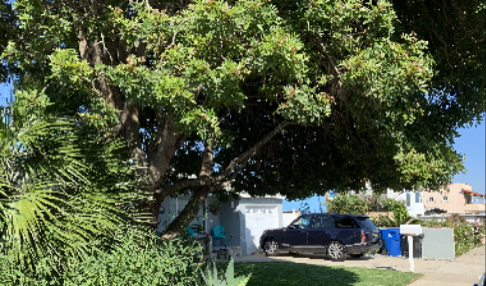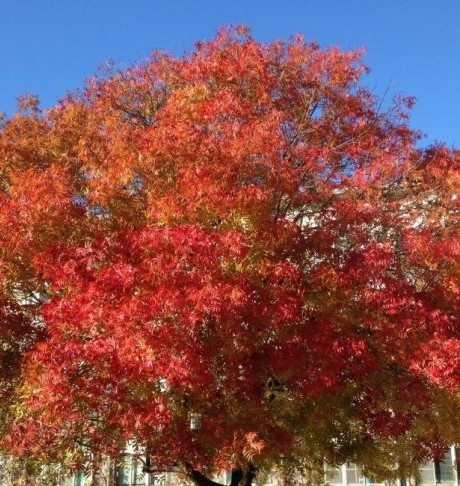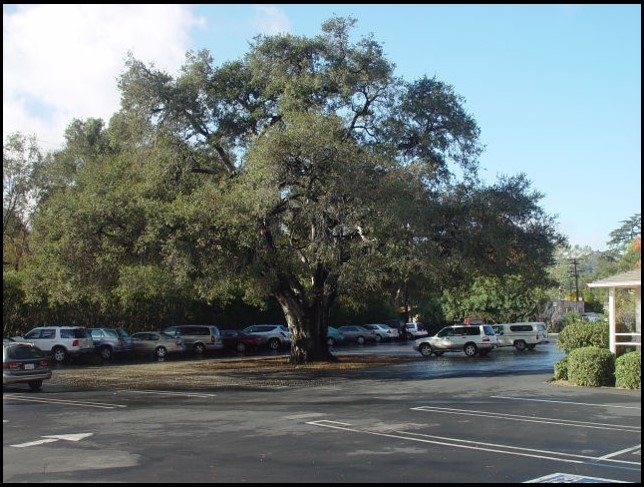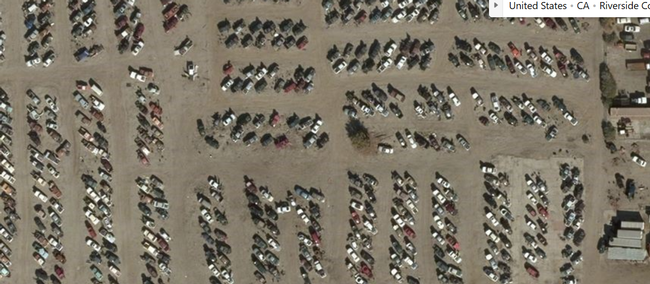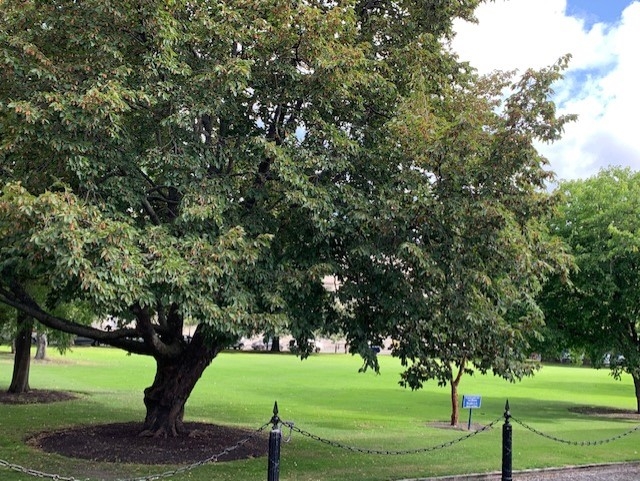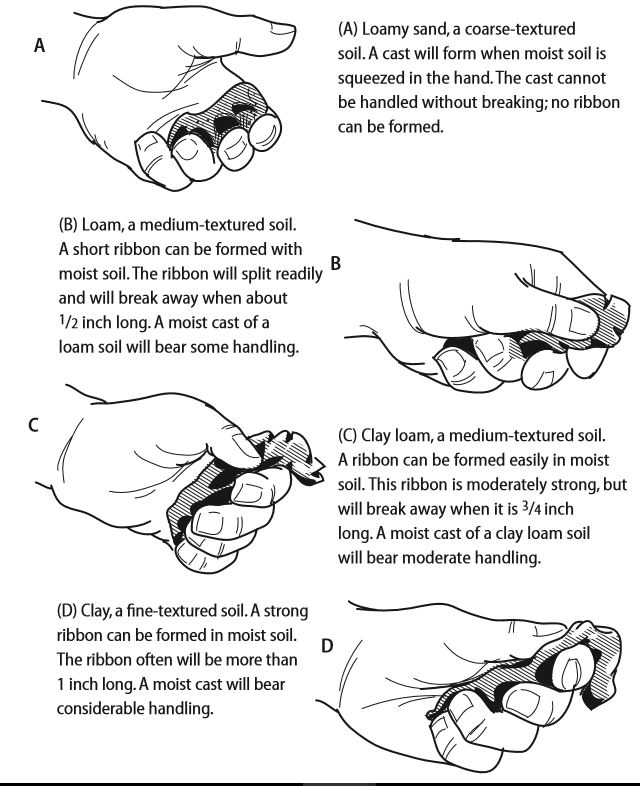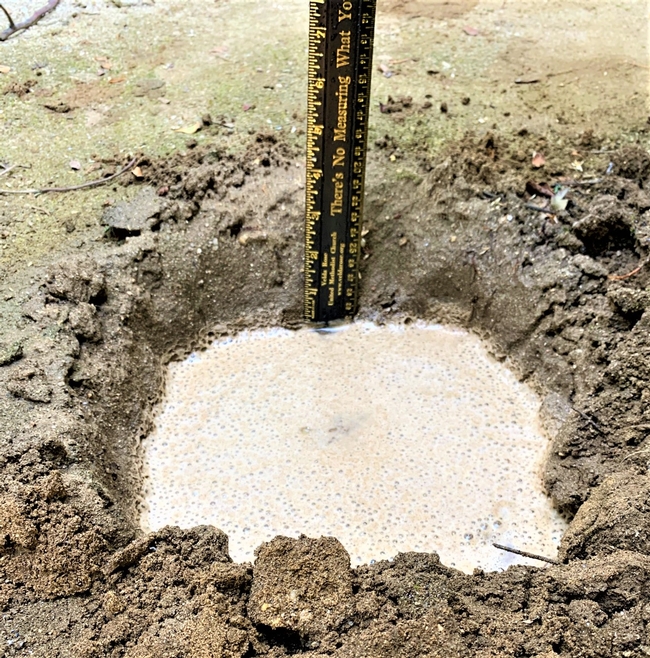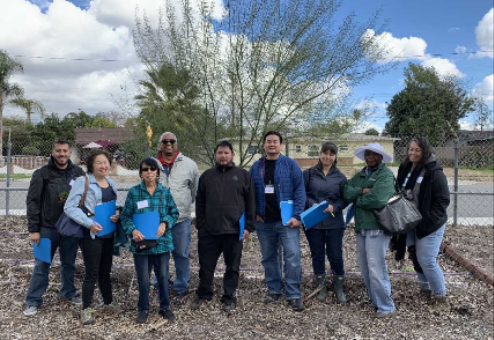Posts Tagged: landscape
The Top Ten Ways to Conserve Water in Your Landscape and Garden in San Bernardino County
1. Select drought-resistant plants that grow well in your climate zone and microclimate (sun, shade, etc.). Try these search engines:
SelecTree: A Tree Selection Guide (calpoly.edu) Plant Search Database
Plant Search Database - Water Use Classification of Landscape Species (WUCOLS IV) (ucanr.edu)
For inland San Bernardino County: Home - Inland Valley Garden Planner
2. ‘Hydrozone': Place plants with similar water needs (very low, low, medium, high) together and water the hydrozones on different valves (or, if hand watering, water plants requiring the most water longer but not necessarily more often than other plants).
3. Make sure your irrigation system is operating properly (pressure, spacing, no weeds around heads, no broken parts, etc.).
4. Irrigate based on species and seasonal water needs (highest in summer) and soil type (sandy loam, clay loam, etc.).
5. Irrigate slightly below the current root zone depth of your plants to encourage deep rooting into cooler soil: - 6”-8” for annuals, perennials, and turf - 8”- 1' for shrubs - 1' or deeper for trees
6. Water early in the morning when soil evaporation is minimal.
7. Control weeds. They compete with your garden plants for water.
8. Spread and maintain 2-4” of mulch around garden plants and trees (3-4” for wood chips, 2” for pebbles, decomposed gravel, etc.) keeping it a few inches away from tree trunks.
9. Avoid over-fertilizing. Too much nitrogen creates weak growth and the need for more water.
10. If you have a lawn and still want to keep it, water based on the UC ANR 'Lawn Watering Guide': http://ucanr.org/freepubs/docs/8044.pdf
Contact a trained University of California Cooperative Extension (UCCE) Master Gardener in San Bernardino County for more help! mgsanbern@ucanr.edu (fastest!) or: (909)387-2182 (leave a message for a return phone call)
Redlands trees
Be part of the solution: Plant drought, heat, and pest resistant trees to combat urban heat islands
Our population of urban trees is shrinking! You can help turn this around by protecting your own trees and by planting new ones recommended for your climate and the conditions around your home. For more on this topic, please revisit my February blog for specific selection and care recommendations: https://ucanr.edu/b/~ZuB.
In addition, please encourage your city to plant a wide range of recommended species today for a healthier tomorrow. Why is this so important? Many of our current street trees are in the 11th hour of their lifespans. While some that were planted decades ago are simply aging naturally, in other cases, they are perishing prematurely due to poor selection and care. This leads to a downward spiral; trees not adapted to the climate they're planted in and not receiving proper care are much more susceptible to invasive pests (shot-hole borers, etc.) and diseases than are healthy, well- chosen and maintained trees. Even the loss of one front yard shade tree can significantly reduce shade, increase the surrounding temperature, and diminish energy savings.
Another reason we're losing our trees is due to the negative impacts of urban heat islands (UHIs) which shorten the lifespan of many species of trees dramatically. Some trees (even many natives!) just aren't able to withstand the higher temperatures (sometimes exceeding 20 degrees) they are subjected to due to UHIs.
What are urban heat islands and why should we care? Urban heat islands are caused by reradiated heat from paved concrete and (especially) asphalt surfaces.
Hard surfaces of UHIs absorb large amounts of heat generated during the day and release it at night, slowly but steadily warming average nighttime (mostly) and daytime temperatures. Together, these negative impacts on our urban trees lead to a sad reality: the average lifespan of an urban tree is only about ¼ of its potential. While our stately shade-producing ficus, oak, maple, pine, rosewood and magnolia trees have potential lifespans of 80 -120 years or longer in unstressed environments, most perish much sooner.And, our cities are growing and expanding. Very few Southern California residents reside in rural areas. Instead of living near pastures, field-filled crops, and forests that cool the surrounding area through evapotranspiration, the vast majority of us reside in warmer urban city centers. Conditions we expect our city trees to endure in 2021 are very different from even 20 to 30 years alone, let alone decades ago.
The good news is that, through proper tree selection and care, we can be a part of the solution. In fact, trees offer many benefits that offset the impacts of UHIs. Cities with larger tree canopies are a testament to this fact and have fewer adverse impacts from UHIs than do cities with low tree canopies. Trees reduce the impact of UHIs by shading parking lots, buildings, and vehicles), deflecting the sun's radiation, and cooling the atmosphere through evapotranspiration. Trees also absorb and store carbon which lessens the impacts of pollution from fossil fuels. A well-tended mature landscape tree can absorb 40 tons of carbon over its lifespan.
The solution? Augment our current urban tree palettes with heat, drought, and pest-resistant native and adapted non-native species. A case in point of a native tree in trouble is our beautiful Joshua trees (Yucca brevifolia) which are dying off in their namesake National Park and seeding 500 or more feet higher elevation than parent plants. Planting trees that withstand UHIs today is crucial for tomorrow.
We are well on the way to identifying landscape tree species that can remain healthy under adverse urban conditions. In our study examining the performance of 12 species of underplanted but promising landscape trees, several candidates are standing out for their heat, drought, and pest resistance.
Landscape Tree Irrigation to Maximize Tree Health, Benefits, and Beauty
Most trees in California need supplemental irrigation above and beyond what Mother Nature supplies naturally. Even drought-resistant species need regular watering through their first growing season due to their shallow roots. Once trees become established, it's important to water less often but more deeply to encourage deep rooting and structural balance above and below ground. Both under and overwatering can lead to unhealthy trees and even death if the situation is not corrected. Trees receiving too little or too much water exhibit similar symptoms since, in both cases, water is not available to the plant. Trees initially wilt, grow slowly, and develop yellow leaves. Over time, growth stops and leaves become brown and drop. Overwatered trees often develop lower crown and root rot from one or more disease-forming pathogens.
Knowing what type of soil you have (soil texture) is as important as knowing the water needs of your trees. Use the ‘feel test' (pictured below) to find out how much water your soil holds and how often to water. Heavier clay-based soils hold water longer and drain more slowly than sandier soils that need to be watered more often for shorter periods of time.
Trees should not be watered on the same irrigation system used for lawns and groundcovers. Soaker hoses and drip systems allow trees to be watered less often but for longer periods of time than your lawn or groundcover. Avoid applying water too close to the trunk. Instead water half-way between the trunk and the dripline of the tree and outward. If you use a garden hose, apply the water on the lowest volume possible slowly, moving the hose every few hours to each of four quadrants around the tree.
Applying a 3-4 inch layer of mulch around the tree can reduce soil evaporation. Use only non-flammable mulches in fire-prone areas within five feet from the house and non-contiguous for the first 30' away from the house. In all cases keep mulch a few inches away from tree trunks to keep the trunks dry.
Tip: Before planting a tree, make sure there is adequate drainage. Dig a hole where you want to plant it (the same depth of the pot, which is about one foot) and fill the hole with water. Let it completely drain and refill it. Measure the time it takes to drain one inch using a ruler. If it does not drain more than one inch an hour it is not a good location for your tree. Avoid adding compost or soil amendments to try to correct the problem since tree roots will likely grow in circles, staying within the confines of the amended hole rather than growing outward the confines of the amended hole rather than growing outward.
UCCE Master Gardeners Participate in Research to Identify Trees That Withstand Climate Change
Nine UC Master Gardeners in San Bernardino County, the Chino Basin Water Conservation District (CBWCD), Inland Empire Resource Conservation District and Mountain States Wholesale Nursery are collaborating with UC Cooperative Extension Environmental Horticulture Advisor and Prinicpal Investigator Janet Hartin on a 'climate-ready landscape trees' study to determine the impacts of mulch on tree growth and health. The project is located at CBWCD in Montclair and includes four species of landscape trees from a larger study at UC Riverside consisting of 12 species without a mulch/no mulch comparison. Species included in the mulch trial are: Parkinsonia x Desert Museum (Desert Museum Palo Verde), Prosopis glandulosa 'Maverick' (Maverick Mesquite), Chilopsis lineris 'Bubba' (Desert Willow) and Pistacia 'Red Push' (Red Push Pistache). Trees were planted in late 2016 and received adequate irrigation for one year to assure adequate early growth. Irrigation was tapered off in 2017 and trees now receive no supplemental irrigation. The first round of results will be reported in July, 2019 by Janet at the annual American Society for Horticultural Science 'Climate Change in Urban Landscapes' session co-chaired by fellow UCCE Advisor Igor Lacan, former UC Davis Postdoctoral Researcher Lloyd Nackley (currently a Plant Physiologist/Nursery Specialist at Oregon State University) and Janet. Thank you to all of our partners!
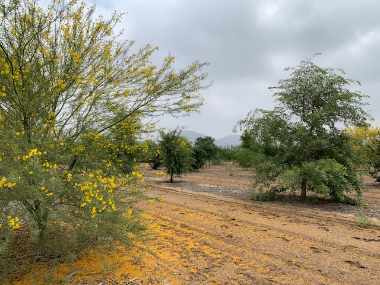
EditedImage (23)
Sensors, drones, and CIMIS: UCCE Partners with EarthWatch and CBWCD to Save Water in Urban Landscapes
On Friday UCCE San Bernardino County Master Gardener Coordinator Maggie O'Neill and I hosted a tour that showcased UC ANR Urban Water Use Specialist's Amir Haghverdi's landscape plots at the UCR Citrus Experiment Station. In attendance were CEO Scott Kania and Lead Scientist Mark Chandler from EarthWatch, Becky Rittenburg and Monica Curiel from Chino Basin Water Conservation District, and Darrel Jenerette, UC Riverside Professor of Landscape Ecology. Our team is implementing an exciting citizen science project measuring water conservation based on implementing 'best practices' in urban landscapes in the greater Los Angeles Basin.
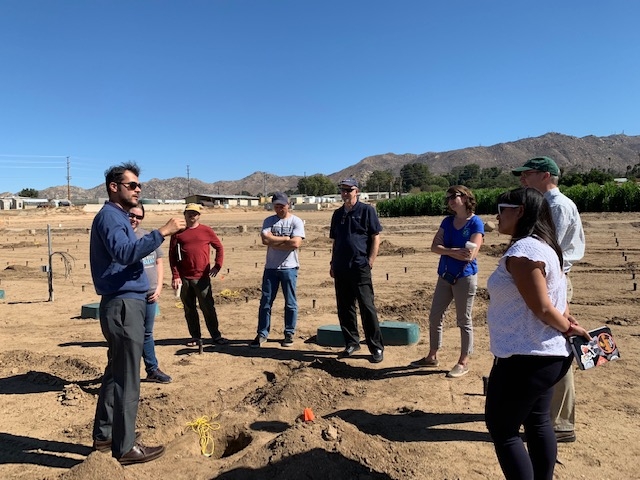
Amir Haghverdi showing plots to EarthWatch, UCCE and CBWCD teams
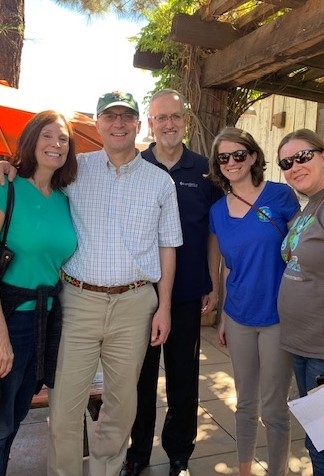
EarthWatch, CBWCD, and UCCE San Bernardino team





